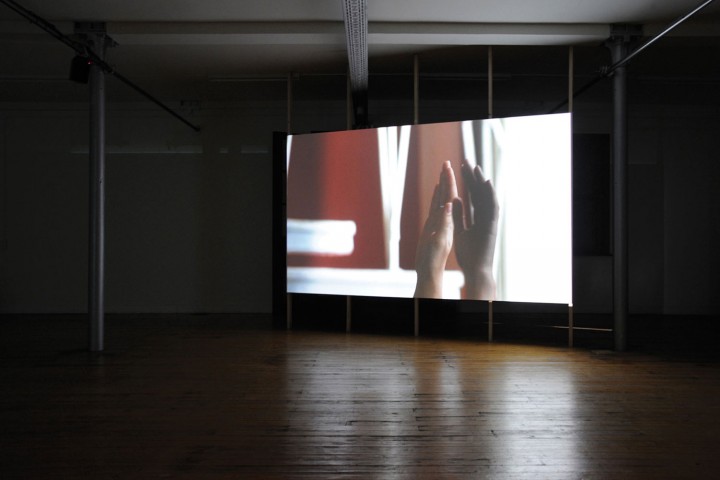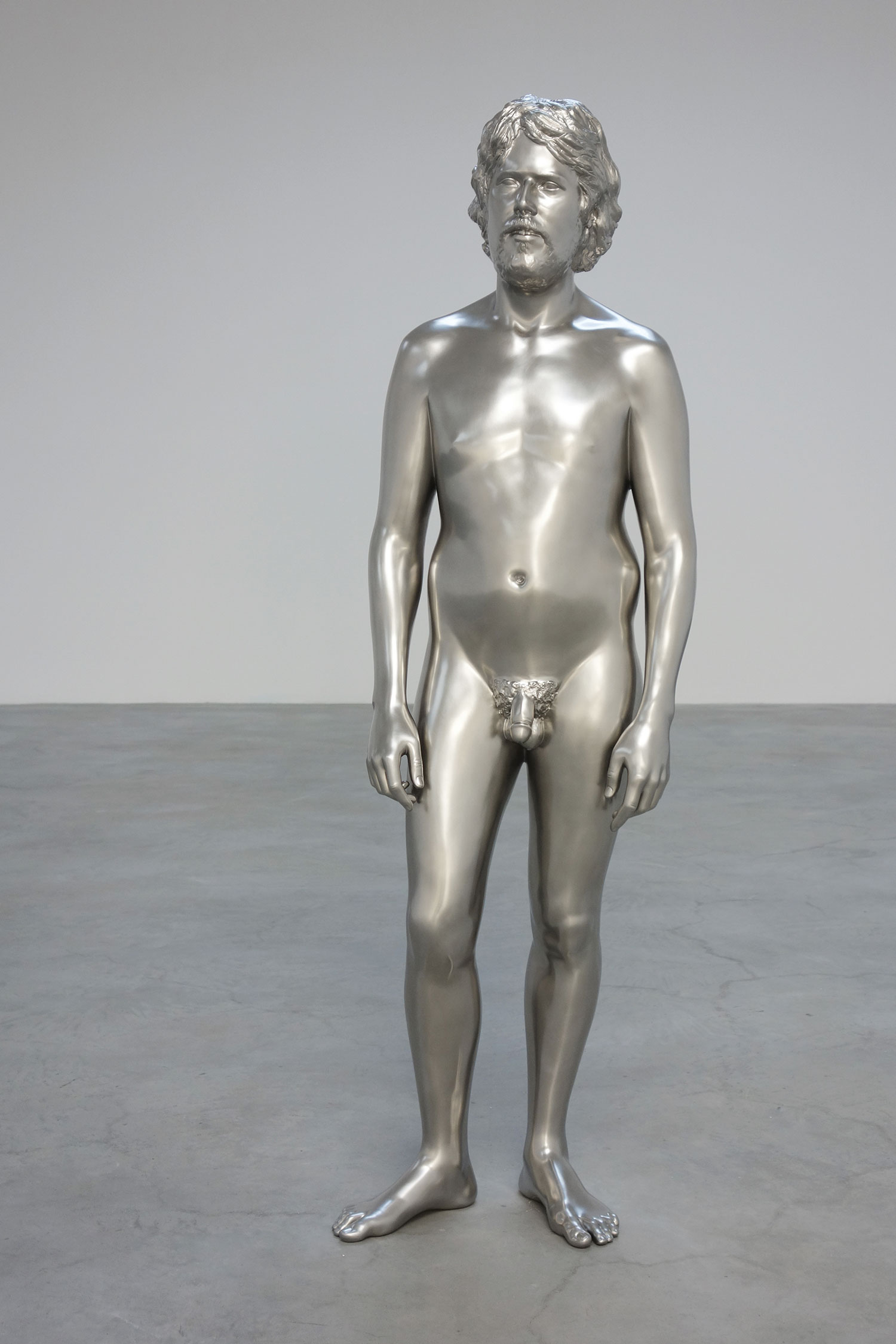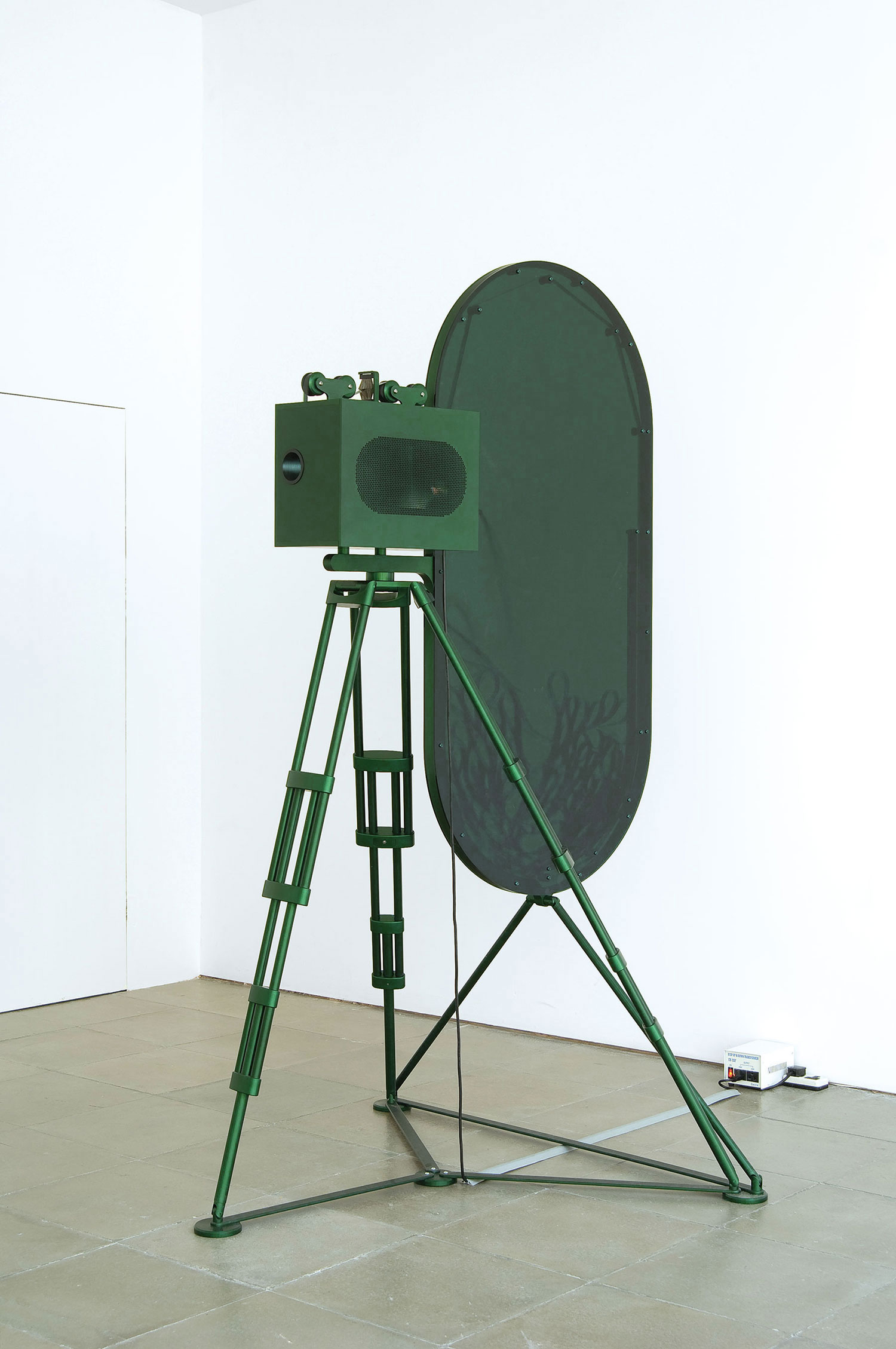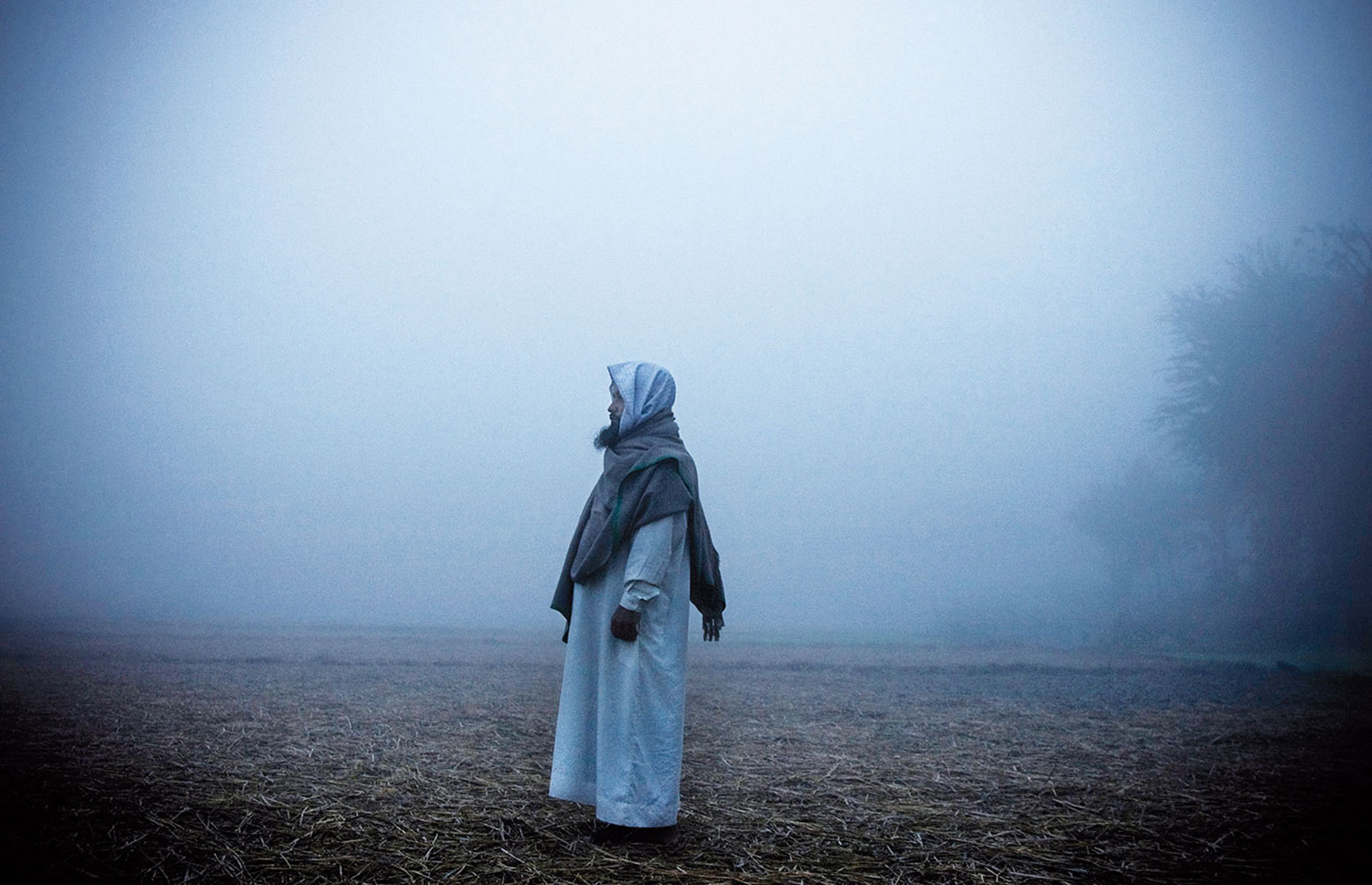
Melissa Gronlund: Your films and events bring up a number of questions concerning authorship, the particularity of media and public sociality, and are often set within frameworks of how to make or do things, almost as if they could be manuals. For example, the group of people who learn to sail in This is how we walk on the moon(2007); your instructions for moving in Magic & Loss (2005); or even You Don’t Love Me Yet (2003), as a score for how to sing that particular Roky Erickson song. You treat pedagogy more directly in two of your recent works, I’m gonna live anyhow till I die (2012), in which a group of Italian children play in an abandoned school, and Learning how to drive a piano (2011–13), in which a traffic queue is converted into a music festival. Could you talk a little about those projects and their relation to pedagogy?
Johanna Billing: This notion of “how” to do things is funny, because this is actually something I never inform people about. This is, I guess, where improvisation comes into the work. I set up a situation where a certain activity could take place, but I never tell the musicians, performers or actors — or “non-actors” in most cases — exactly what to do. My work is perhaps anti-pedagogical in that sense. I like the idea that you can find out about things and how to do them, and also why you should do them, while you are doing them, and particularly in the most simple or everyday activities that aren’t normally cause for reflection. It sounds like a classical, hands-on pedagogical approach of learning by doing. But it is above all the uncertainty of the situation that I am interested in.
MG: Could you talk about how those ideas of uncertainty and openness informed I’m gonna live anyhow till I die? The film has a remarkable sense of freedom about it, not only given by the sheer delight of the children who have left their parents, but also in terms of form, as it jumps between time and place, and its soundtrack of improvisations on compositions by Franco Battiato.
JB: I was invited to make a work in Rome and landed there in 2010 in the middle of the student demonstrations, which had quite an impact on me. I decided early on that I needed to work with education, but also with children. There is a strong pedagogical tradition in Italy with visionaries like Bruno Munari and his experimental workshops for kids. Historically, children have been a focus in Italian film over the years. Many major Italian filmmakers refer to their own childhoods of the ’40s and ’50s, portraying in their films groups of children on the streets of Rome. Through their perspective I found an unexpected way to tell a story of a city, its people and a world that has gone through many changes. Today it is almost impossible to see children running around by themselves in Rome or any other city.
I was interested in working with this quite wild set up, following a group around different historically loaded locations, with the kids seemingly doing what they felt like. They improvise within the frames once they are there. Finally they break into an empty school and find themselves in a classroom that has been turned into a storage room. They play around curiously and a bit roughly with the obsolete pedagogical tools and technological instruments they find, as if they are trying to understand what they could be used for. They are involved in a search for knowledge and at the same time a freedom of play. Certainly, as you said in the very beginning, it is about testing some boundaries of authorship. About who can do what, and how.
It is an ongoing struggle as an artist to balance an experimental and intuitive process with a conceptual and historical theoretical interest, which is where I situate my practice. It is a bit of a challenge sometimes, but I find it an urgent and inspiring gap to work within.

MG: What are some of the strategies you’ve used to accomplish this balance?
JB: More and more I’ve explored ways of working with improvisation, which is not so frequent nowadays in filmmaking. In Pulheim Jam Session (2011–13), which will lead to the film that for now has the working title Learning how to drive a piano, I organized a huge traffic jam with hundreds of people and their cars from the villages around Pulheim, a rural city outside of Cologne where the average household has about 2.7 cars. At the same time as the traffic jam, the Swedish artist and musician Edda Magnason held a musical jam of a more private, rehearsal-like character, improvising on a grand piano in a nearby barn in one of the villages. The Pulheim Jam Session piano improvisations came to be some kind of worthy cousin — or perhaps tribute — to the now-legendary album The Köln Concert, Keith Jarrett’s solo improvisations for a live audience that were accidentally recorded at the Cologne Opera House in 1975, the same year as the communal reform which turned all villages into a city took place.
MG: What do you mean by ‘accidentally recorded’?
JB: Well, accidentally is perhaps not the correct word, but up to the very last minute it was uncertain whether the concert would at all happen. Jarrett himself tried to stop the concert being recorded as he thought the set up around the event was a catastrophe. He had not slept in 24 hours and arrived just hours prior to the concert, as he had decided to drive by car, squeezed into a mini Renault 5, from Zürich the day before. The grand piano was of very poor quality. He was persuaded at the last second by an incredibly enthusiastic arranger, the 17-year-old Vera Brandes. Some people say that it was because he had to make up for the bad condition of the instrument, that this specific concert, in which every sound — from the very first note of the keys — was a totally unplanned improvisation, that made it turn out to be such a different experience. Other people say Jarrett was “reactivating” an emotional connection to Cologne from a previous romance he had experienced there. In his own biography there is a wonderful quote by him about the reason for why this recording turned out to be so important to so many people; it also sums up some of my own interests in relation to freedom, improvisation, reality and the presence in a live event:
“I think that’s because there is a logic people associate with reality that reality doesn’t actually have all the time, but which did exist on the occasion of that particular concert. There’s a logic to the music in that concert — it sounds free, but it also sounds like it’s moving from one thought to another without any separation, without any jump. Yet reality is more a series of jumps than that steady stream of thought being nice and smooth…”

MG: I work in a university, and during the summers the corridors always look outsize, as they were planned in order to accommodate a large number of people walking through them. Your work also asks a similar question: Is a place the physical locality, or is it the people within it? Your projects are so finely attuned to location and often use music to draw out characteristics of their settings — I’m Lost Without Your Rhythm (2009) uses contemporary dance in Romania, while Magical World (2005), in which after-school club children in Croatia rehearse the song of the same name, suggests resonances for the country as it was entering the EU. At the same time they create specific groupings of sociality that seem oddly placeless or even universal. How do you view the construction of a place?
JB: When looking for locations, which I do early on and which is important to shaping the project, I always look for things that I can recognize — something familiar that I can relate to my own memories and background, even if it is a small city in Romania or a suburb in Croatia. I can never make a real documentary about a specific place or people, but at the same time I try to comment on a certain place or time, and to investigate my own personal history, in order to understand how I too have been affected by city planning, architecture and political decisions in the neighborhoods around me.
Because of this, it is not strange that many of my films have taken place in semi-public or official buildings like cultural centers, schools, state-funded leisure complexes or even private apartments. I am interested in these places that grew out of ideological aims and political decisions, from the ’40s until now, in Sweden as well as in other countries in Europe — and particularly in terms of how they affect people in their personal lives and how the values they help create have changed over the years. Similar changes often take place in countries that are very different.
When I invite people to perform within these complexes, which they often no longer have any practical connection to, they join me in trying to figure out the meaning or function of the institution — both historically and in the context of making the film. And perhaps this is how we together construct — or perhaps better, suggest — this new space within the films that could appear, as you say, universal.
MG: One last question, again on the topic of improvisation. You once said that you stopped doing your record label because people thought you, as an artist, were making “representations of music” rather than music itself. That’s a really astute observation and I was wondering if you could expand on that. In making your videos, where does the line between sociality and a representation of sociality lie? I’m thinking in particular of the fact that much of your research never makes it into the final product, so that your projects are often much larger than the video made about them.
JB: Yes, in a way that is true. What I have been trying to do lately is to open up and activate more parts of the projects during the process, like, for example, working with both a public performance and a film recording. I’m lost without your rhythm was first of all a workshop for a live audience, and the Pulheim Jam Session was a live action; in the editing process it will become something very different. I used these projects as a way to look into the differences and possibilities of the live event, and to make a film that does not necessarily become a documentation of a performance but something abstract and new in itself. In the final product it is not so much that sociality that I am trying to capture. Rather, I am looking for a way to bring the focus of the project back onto the individual, and I believe this is what I am also interested in communicating later with the film.
I want to experiment with the idea of what public art can be, what live art can be and how I can work with the recording of musical soundtracks in films in unconventional ways. Somehow I am still trying to keep the presence and spontaneity of the event, even in a very processed medium like film.





